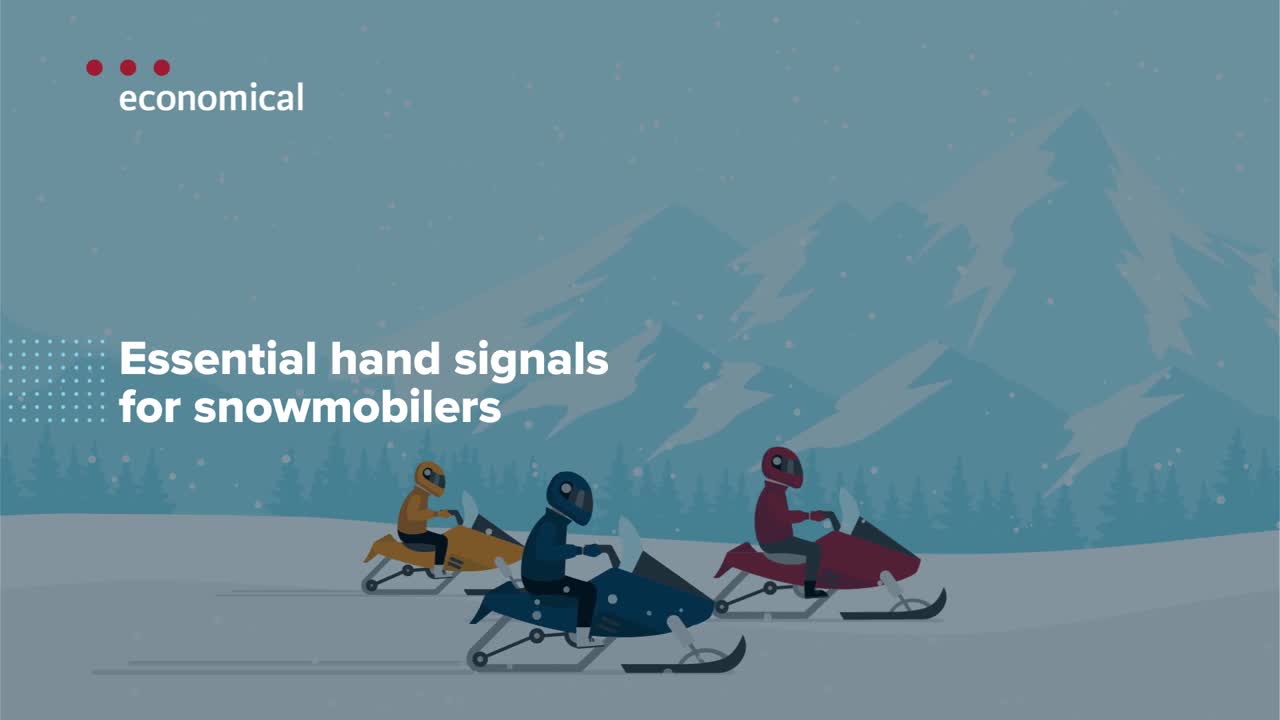10 essential safety tips for snowmobilers
Written by Stephanie Fereiro | Published on: January 2, 2019 | Categories: Lifestyle, On the road
If you snowmobile, that dusting of fresh powder outside may be calling your name — but it’s important to keep safety in mind to avoid any mishaps and make sure you return to the cabin in one piece. Take note of these safety tips and watch the video below to learn your hand signals before you hit the trails.
- Dress for success. Dress in layers, with well-insulated, wind- and water-proof gear on top and moisture-wicking materials underneath. If you snowmobile often, you may want to purchase a snowmobile suit instead of wearing a regular snow suit. You should also have a well-fitting helmet, gloves, boots, and eye protection (like a visor or goggles). Avoid wearing naturally absorbent fibres like cotton when you snowmobile, as they can make you colder if they get wet. Remember, you can take layers off if you get too warm on the trails, but you won’t necessarily be able to put more on if you get cold — so start with more.
- Keep an eye on the weather forecast. If a freezing rain storm or a blizzard with whiteout conditions is brewing, you’ll be better off cozying up inside and saving your ride for another day.
- Learn your local laws. If you’re new to snowmobiling or just need a refresher on the rules, take some time to look into your local and provincial laws before hitting the trails. While you may think some laws exist to ruin your fun, they actually exist to keep you out of harm’s way — and they just might save your life.
- Stay sober. Operating a snowmobile after consuming alcohol or cannabis products is dangerous and has the same consequences as driving or boating under the influence. If you’re convicted, you could lose your driving privileges for all types of vehicles.
- Plan your route. Before you head off on your way, plan your route and share it with a family member or friend who can call for help if you don’t return as planned. You could also consider turning on your mobile phone’s location sharing settings and allowing your friend or family member to access your location details throughout the day.
- Try to stick to official trails. Find out if there are designated snowmobiling routes in your area, and stay on those if you can. Designated trails should be well-groomed and ideal for a smooth ride.
- Tame your need for speed. Just like with any vehicle, picking up too much speed on your snowmobile can lead to trouble. If you stick to the speed limit — or even slower in poor riding conditions — you’ll have better traction and more control. Speed limits for snowmobiling vary depending on where you are, so be sure you find out what the limits are in your location before you head out for the day.
- Steer clear of frozen water. If you ride your snowmobile over a frozen lake, you risk falling through the ice or losing traction. If you absolutely have to ride on ice, you need to know that it’s thick enough to hold the weight of your snowmobile — and if you’re unsure, you should take another route instead. You should also avoid frozen rivers where there may be strong currents flowing beneath the ice. The Canadian Council of Snowmobile Organizations has some more tips for riding on ice.
- Don’t hit the road, Jack! Most paved public roads (and their shoulders) are off-limits to snowmobiles, and for good reason — snowmobiles can’t possibly compete with the size and speed of regular passenger vehicles and trucks. In some cases, you may need to cross a paved road, but you should know there are laws that prohibit certain riders from doing so (e.g., riders who are under 16 or who don’t have a driver’s licence) and speed limits you need to follow.
- Know your hand signals. Not only is it important that you know how to signal when you have to turn or stop, but you also need to know how to signal when there are more snowmobiles approaching in front of you or behind you, when you’re the last sled in line, or when you’re slowing down. Watch the video below and practice your snowmobiling hand signals before you start your engine.
Important hand signals for snowmobiling
Practice these seven snowmobiling hand signals before you hit the trails:

Insurance for your snowmobile
Sometimes accidents happen when you’re snowmobiling, even when you follow the speed limit and do all that you can to stay safe — and that’s what insurance is for. These are the most common types of coverage that you may find in your snowmobile insurance policy:
Most provinces require you to have a minimum amount of snowmobile insurance if you plan to ride off of your own property, but you may want to increase your limits to make sure you’ll have enough coverage in the event of an accident. Depending on your insurer, you may also be able to purchase additional coverage for your riding gear.
Whether you have questions about the types of coverage available or you already have snowmobile insurance and you just want to make sure the limits are right for you, reach out to your licensed insurance broker today.
Want to help other snowmobilers enjoy a safe season, too? Share these tips on Facebook or Twitter.